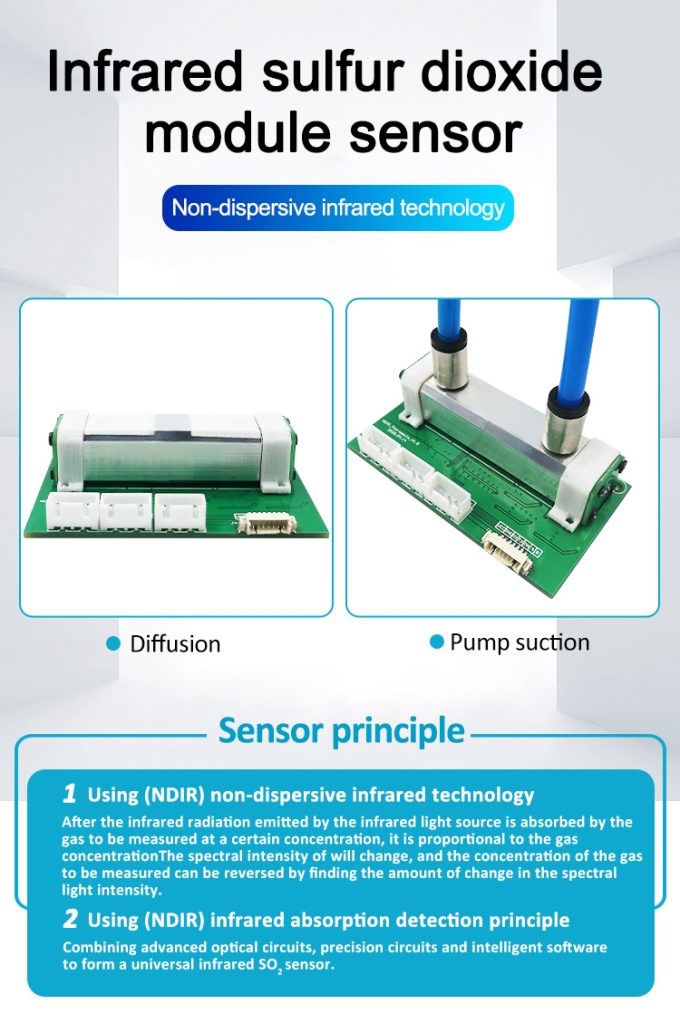Background:
For nearly 100 years, catalytic combustion sensors, also known as catalytic beads, have been known as the “canary in the coal mine” of high-tech invention, according to the field. The sensor can be used to alert workers in potentially explosive environments, particularly in the mining, gas and oil industries. Red lines for flammable gases. In the 1960s, scientists introduced nondispersive infrared detector (NDIR). Although both types of sensors make potentially hazardous operating environments safer, they are being improved each year. Recently, however, a major breakthrough has been made in combustible gas sensor technology.
A brief introduction of catalytic combustion sensor:
One of the reasons catalytic combustion sensors have been used so far is that they can detect almost all flammable gases. Even today, catalytic combustion sensors as a commodity still account for 60% of the market. Why is it so possessive? Because most of the time, catalytic combustion sensors are very reliable if maintained properly. Catalytic combustion sensors can sense any combustible gas and are relatively inexpensive. However, catalytic combustion sensors also have some disadvantages, the most important of which is that they are prone to toxicity. These sensors are susceptible to catalyst poisoning by silicon, sulfur and other compounds, which can shorten their service life.
Even in environments with low levels of silicon, lead or phosphate, there is still a risk of sensor degradation. And ultimately, the inability to accurately detect the presence of gas. In the case of high concentration of combustible gas, catalytic combustion sensor will quickly damage and stop working. More importantly, catalytic combustion sensors do not work in low oxygen environments, including confined Spaces. The only way to know if catalytic combustion sensors are not working is through testing. Without a rigorous routine testing process, personnel safety may be at risk.
Other current challenges facing catalytic combustion sensors include the need to set parameters to accurately measure specific gases and the inability to accurately measure mixtures of combustible gases. Catalytic combustion sensors operate at a high power consumption of at least 70 to 100 mA. So portable detectors using catalytic combustion sensors are also limited by battery life.
Nondispersed infrared (NDIR) sensor:
Like catalytic combustion sensors, NDIR sensors have played an important role in environmental safety and gas detection in recent decades. When catalytic combustion sensors are not suitable, NDIR sensors are another reliable option. Unlike catalytic combustion sensors, NDIR sensors do not require frequent recalibration, and they are not toxic. “They also have a longer life span compared to catalytic combustion sensors, typically one to two years and up to three to five years.” Dr. Hsi said. Because the NDIR sensor is also capable of detecting gases in low oxygen environments, it is more useful in situations where catalytic combustion sensors are ineffective. They consume much less power than catalytic combustion sensors and are not damaged by exposure to concentrated gases.

CH4 Module NDIR Infrared methane module gas sensor:
The infrared methane gas sensor uses the principle of non-dispersive infrared (NDIR) to detect the methane gas present in the air. The sensor performance is excellent. It can be widely used in high-risk places such as coal mines and mining industries.Long service life, NDIR sensor has no obvious use consumption compared with traditional electrochemical sensor, and has a long service life.zero calibration function: convenient for users to calibrate zero.

CO Module NDIR Infrared carbon monoxide module gas sensor:
Infrared carbon monoxide gas sensor uses nondispersive infrared (NDIR) principle to detect carbon monoxide gas in the air. The sensor has good selectivity and no oxygen dependence. The technical parameters are stable and reliable, and the product life is long. Built-in temperature compensation function. The products with large range have good selectivity, which makes up for the deficiency of traditional electrochemical sensors in the selection of high range detection range. Imported infrared light source and dual channel pyroelectric measurement do not have to worry about harsh environment, and can automatically compensate the temperature function, even in harsh temperature and environmental conditions, also can obtain stable and reliable measurement results.